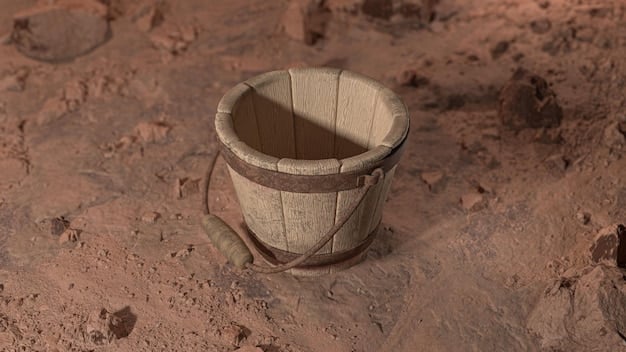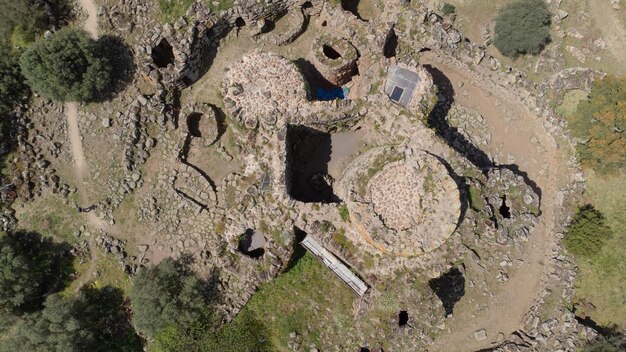Unearthing the Past: The Archaeology of Everyday Life

The Archaeology of Everyday Life: Reconstructing the Lives of Ordinary People from the Past offers a unique lens into understanding history, shifting from grandiose narratives to the tangible realities of common individuals, revealing insights into their daily routines, challenges, and triumphs.
Imagine holding a piece of pottery, worn smooth by countless hands, or tracing the outline of a humble dwelling, long since crumbled. What stories do these remnants tell? The Archaeology of Everyday Life: Reconstructing the Lives of Ordinary People from the Past isn’t about kings and queens, but rather, about the baker, the farmer, and the weaver.
This fascinating field delves into the mundane aspects of past civilizations, offering a profound understanding of how ordinary people lived, worked, and interacted with their world. Join us on a journey to explore the power of artifacts and structures in revealing the narratives of those who shaped history from the ground up, making the archaeology of everyday life a captivating area of study.
What is the archaeology of everyday life?
The archaeology of everyday life is a subfield that focuses on understanding the past through studying the objects, structures, and landscapes used by ordinary people. It is about reconstructing lives through modest remains.
Shifting the Focus: From Elite to Everyday
Traditionally, archaeology often centered on monumental architecture, royal tombs, and significant historical events. While these remain important, the archaeology of everyday life offers a complementary perspective, shifting the focus to the experiences of the masses. This approach acknowledges that history is not solely shaped by rulers and elites.
- Broadened Understanding of Past Societies: By examining the lives of ordinary individuals, it provides a more nuanced and complete picture of past societies, including their social structures, economic activities, and cultural practices.
- Humanizing the Past: It connects us to the past on a personal level, fostering empathy and understanding for those who lived before us.
- Challenging Historical Narratives: The field can challenge established historical narratives by revealing the diversity and complexity of past experiences, often overlooked in traditional accounts.
Consider, for example, studying the remnants of a Roman bakery. Instead of focusing solely on the grand architecture of Rome, archaeologists examine the ovens, grinding stones, and discarded grain remnants. This provides valuable insights into the labor, diet, and economic activities of the people who worked there, thus contributing to an understanding of Roman society.

In essence, the archaeology of everyday life democratizes history, giving voice to those who were often marginalized or ignored in traditional accounts. It reveals the richness and complexity of past lives, offering a more inclusive and relatable understanding of the human experience.
Tools and techniques for uncovering the past
Archaeologists employ diverse tools and techniques to reconstruct the lives of ordinary people, encompassing both traditional methods and cutting-edge technologies.
Excavation Techniques
Excavation remains a cornerstone of archaeological investigation. Careful and systematic digging allows archaeologists to uncover artifacts and features in their original context.
- Stratigraphy: Analyzing the layers of soil and sediment to understand the chronological sequence of occupation and events at a site.
- Grid Systems: Dividing a site into a grid to precisely record the location of every artifact and feature, ensuring accurate mapping and analysis.
- Screening: Sifting soil through screens to recover small artifacts and organic remains.
Artifact Analysis
Studying the artifacts themselves provides direct insights into the activities, technologies, and beliefs of past people. For the archaeology of everyday life, this could mean studying common tools or cooking utensils to determine the daily routine.
In addition to traditional excavation techniques, modern technologies are revolutionizing what we know about the archaeology of everyday life. Ground-penetrating radar, for instance, allows archaeologists to look beneath the surface. Another key process is the analysis of organic remains, such as pollen or seeds, which can reveal information about past diets and environments.

By combining these methods and technologies, archaeologists are able to tease out intricate details about the lives of ordinary people in the past. Each technique contributes a piece to the puzzle, ultimately helping us to reconstruct the stories of those who came before us.
Discoveries highlighting everyday life
Numerous discoveries across the globe illuminate the daily lives of ordinary people in past civilizations, offering captivating glimpses into their routines, struggles, and innovations. Examining the lives of ordinary citizens is a key part of the archaeology of everyday life.
Pompeii: A City Frozen in Time
The eruption of Mount Vesuvius in 79 AD preserved the Roman city of Pompeii in remarkable detail, offering a snapshot of everyday life in the first century. The ash preserved buildings, objects, and even the remains of the inhabitants. These artifacts demonstrate a unique picture of the archaeology of everyday life.
Çatalhöyük: Neolithic Community
Çatalhöyük, located in modern-day Turkey, provides valuable insights into life in a Neolithic community. The settlement, inhabited from approximately 7500 to 5700 BC, consisted of densely packed mudbrick houses, revealing social structures and daily routines of the inhabitants.
- Domestic Life: Hearths, ovens, and grinding stones demonstrate how food was prepared and consumed.
- Artistic Expression: Wall paintings and figurines offer insights into the beliefs and symbolic world of the community.
- Social Organization: The layout of the houses and the distribution of artifacts hint at social hierarchies and community interactions.
The study of Çatalhöyük provides a fascinating look at the way of life of an early farming community. It sheds light on the daily challenges and innovations of people who lived thousands of years by relying on the archaeology of everyday life as a guide.
Challenges in interpreting archaeological data
Interpreting archaeological data presents numerous challenges, requiring careful consideration and interdisciplinary approaches. The challenges are particularly acute when attempting to reconstruct the lives of ordinary people. How do we know which interpretations are more probable than others in the archaeology of everyday life?
Preservation Bias and Limited Evidence
One of the primary challenges is preservation bias. Not all materials survive equally well over time. Organic materials, such as textiles, wood, and food remains, are particularly vulnerable to decomposition, while durable materials like stone and ceramics are more likely to be preserved. This can skew the archaeological record, leading to an incomplete picture of past life.
Contextual Interpretation and Ethnographic Parallels
Archaeological finds must be interpreted within their specific contexts. An object’s meaning and function cannot be understood in isolation; it must be considered in relation to its surrounding environment, associated artifacts, and the overall site. Drawing ethnographic parallels, by drawing comparisons with contemporary cultures, is another important tool in archaeological interpretation.
Even with the best available data and methodologies, interpretations remain subject to uncertainty. A single artifact can have multiple potential meanings, and the archaeological record can be open to competing interpretations. To address these challenges, archaeologists increasingly collaborate with experts, recognizing that a multidisciplinary stance could reinforce the results of the archaeology of everyday life.
The future of everyday life archaeology
The future of the archaeology of everyday life promises exciting new avenues for understanding the past, fueled by technological advancements, interdisciplinary collaborations, and an increasing focus on inclusivity and community engagement. In the future, archaeologists will continue to develop new tools and technologies to extract more information from the archaeological record.
Advancements in Technology
Technological advancements are poised to revolutionize archaeological research, providing new tools and methods for data collection, analysis, and interpretation. New technologies can revolutionize the methods used in the archaeology of everyday life.
- Remote Sensing: Drones, satellite imagery, and LiDAR technology can be used to map sites, identify hidden features, and monitor archaeological landscapes.
- 3D Modeling: Creating three-dimensional models of artifacts and structures for preservation, analysis, and virtual reconstruction.
- Artificial Intelligence: AI algorithms can assist in artifact classification, pattern recognition, and predictive modeling.
Archaeological research is increasingly interdisciplinary, bringing together experts from diverse fields such as anthropology, history, geography, environmental science, and computer science. This collaborative approach allows for a more nuanced and comprehensive understanding of past societies.
As the field evolves, the archaeology of everyday life stands to reshape our perception of the past, shedding light on the lives of ordinary people and fostering a more inclusive and relatable view of history.
| Key Point | Brief Description |
|---|---|
| 🔍 Focus on Everyday Life | Shifts from elites to ordinary people’s experiences. |
| 🏺 Artifact Analysis | Examines ordinary objects to understand daily routines. |
| 🌍 Global Discoveries | Pompeii and Çatalhöyük offer glimpses into past societies. |
| 🤖 Tech Advancements | Remote sensing and AI enhance archaeological studies. |
Frequently Asked Questions
It’s a specialized field focusing on the tangible remains of common individuals, unveiling their daily routines, challenges, and societal roles through the study of artifacts and structures.
Archaeology complements traditional historical studies by providing tangible evidence, offering insight into past societies. It focuses on material culture, giving voice to the people.
Key tools include excavation, stratigraphy, artifact analysis, and modern technologies such as remote sensing and 3D modeling to ensure a comprehensive understanding.
Artifacts can include anything from pottery shards, cooking utensils, and tools to remnants of dwellings. These help reconstruct daily activities, diet, and social structures.
Challenges include preservation bias, incomplete evidence, and the difficulty in interpreting the significance of artifacts without additional context. These limitations require collaboration.
Conclusion
The Archaeology of Everyday Life: Reconstructing the Lives of Ordinary People from the Past offers a captivating window into understanding history from the ground up. By studying mundane objects and structures, archaeologists illuminate the lives and realities of the people who shaped civilizations.
As technology advances and interdisciplinary collaborations deepen, this field offers exciting opportunities to uncover even more about the past and connect with those who came before us on a much more personal level, giving new insights.





